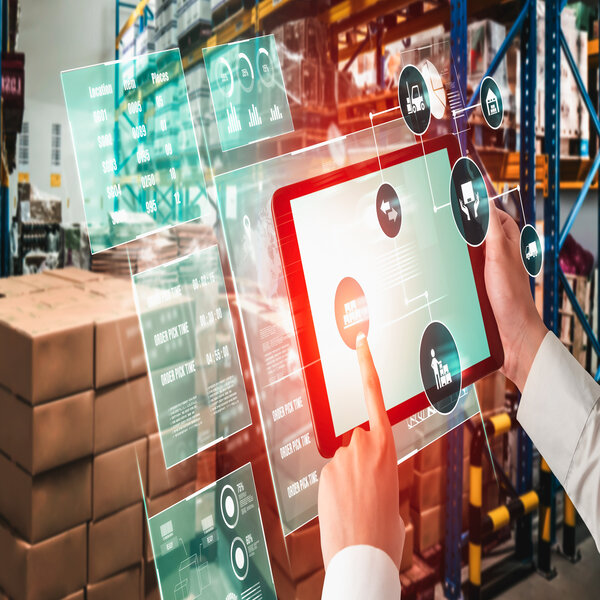Anyone who works in the distribution industry will attest to its competitiveness, but it has been one of the industries most impacted by recent events.
In February 2020, the COVID-19 pandemic put the final in the coffin of the longest continuous economic expansion in US history. Two years later, Russia’s invasion of Ukraine shattered over 70 years of peace in Europe, worsening global supply chain challenges, further compounding historic levels of inflation, and setting off a round of interest rate hikes. Uncertainty continues to roil markets and vex leaders in the distribution industry. At the same time, leaders across the distribution company have recognized the promising opportunities of digitizing processes, taking advantage of the scalability and economy of the cloud, and serving customers with a better experience.
Regardless of how the next few months unfold, the distribution industry is set to continue to be battered by demand volatility, inflation, and supply chain issues. These challenges, combined with geopolitical tensions, are likely to persist, as are labour shortages, especially in warehousing and delivery.
With this challenging landscape, small-to-medium-sized distribution companies should incorporate Enterprise Resource Planning (ERP) solutions into their long-term growth strategy. But forward-thinking companies are looking beyond the basic capabilities of on-premises ERP systems. They’re looking to the cloud.
Cloud Tech and Distribution – A Match Made in Heaven
Cloud technology has catalyzed change in the distribution industry’s digital transformation. Cloud-based ERP software can give distribution companies distinct competitive advantages in the market, offering affordable, flexible, and comprehensive solutions for data storage and customer management, which are simply not achievable with on-premises ERP systems.
Cloud ERP software is one tool that can streamline and scale many processes to meet customers’ needs and manage the unpredictability of the distribution market by empowering distributors by allowing them to access data anytime and anywhere.
The Benefits of Cloud ERP Solutions for Distributors
1. Lower operational costs.
If you have been in the distribution business for a few years, you will have incurred the costs of implementing your on-premises ERP system – purchasing servers, database creation, initial implementation, consultants, IT staffing, security, backup, and so much more.
A major benefit of a cloud-based ERP solution is a reduction in costs, which begins at implementation. Cloud ERP systems generally cost about 30% less than on-premises ones. Since the cloud ERP vendor hosts and manages the software on its own servers, your business will avoid upfront infrastructure costs as well as additional costs for IT staff, maintenance, security, and updates.
Cloud ERP systems offer companies a powerful suite of reporting and analysis tools for a 360-degree view of their operations. With everything on a single platform, data is available with drilldowns to support transactions across the different applications. And thanks to the role-based dashboards, you can monitor key performance metrics for financials, operations, sales, projects, and more.
2. Provide better customer service.
Customer service has always been a top priority for businesses and remains crucial to success. The better the experience a company provides, the higher the customer loyalty.
An ERP system helps companies deliver goods at a faster rate. It also helps to create a bond with your suppliers and ensures that the deliveries are accurate and on time. In short, companies are more in control of their inventory, which in turn helps to improve productivity and goodwill with the customer.
When the backend processes are streamlined – customers benefit, and companies with a cloud ERP system can benefit from a holistic view of their customers. This means that they’ll have access to their details and history, which in turn helps them identify loyal customers.
3. Easy scalability.
Every business encounters challenges with its legacy systems. In their prime, these systems were innovative and cutting-edge, serving you well and helping you achieve your goals. But now, they are not functioning as well as they did in the past and are very costly to maintain. The typical business spends between 60% and 80% of its IT budget simply maintaining its existing legacy systems and applications.
Further, on-premises ERP systems require significant investments in IT staff, hardware, and license fees for legacy systems and databases. Despite their best efforts, your IT team struggles to keep everything connected with updates from multiple software publishers and ever-changing infrastructure requirements for new product releases. Scalability—the capacity to handle growth and change—is impossible with these antiquated legacy systems.
Scalability is another key advantage of cloud deployment. So, what makes cloud ERP systems more scalable than their on-premises counterparts? The virtualisation of software components in the cloud architecture makes it remarkably simple to scale up or down system configurations as or when required, offering greater convenience and better control for distribution companies.
How to Find the Right Cloud-Based ERP Software
Every distribution company needs a modern and adaptable ERP platform to connect data from multiple systems for real-time insights and tools to foster customer relationships and stay competitive in these uncertain times.
As leading distributors continue to embrace the connected warehouse and advanced analytics to propel their future growth, it is important to know the value cloud-based ERP software can bring to your company. That way, you can be confident that you are adopting the solution that best suits your requirements.
Learn more about how a distribution company can improve productivity with a Cloud-Based ERP.



